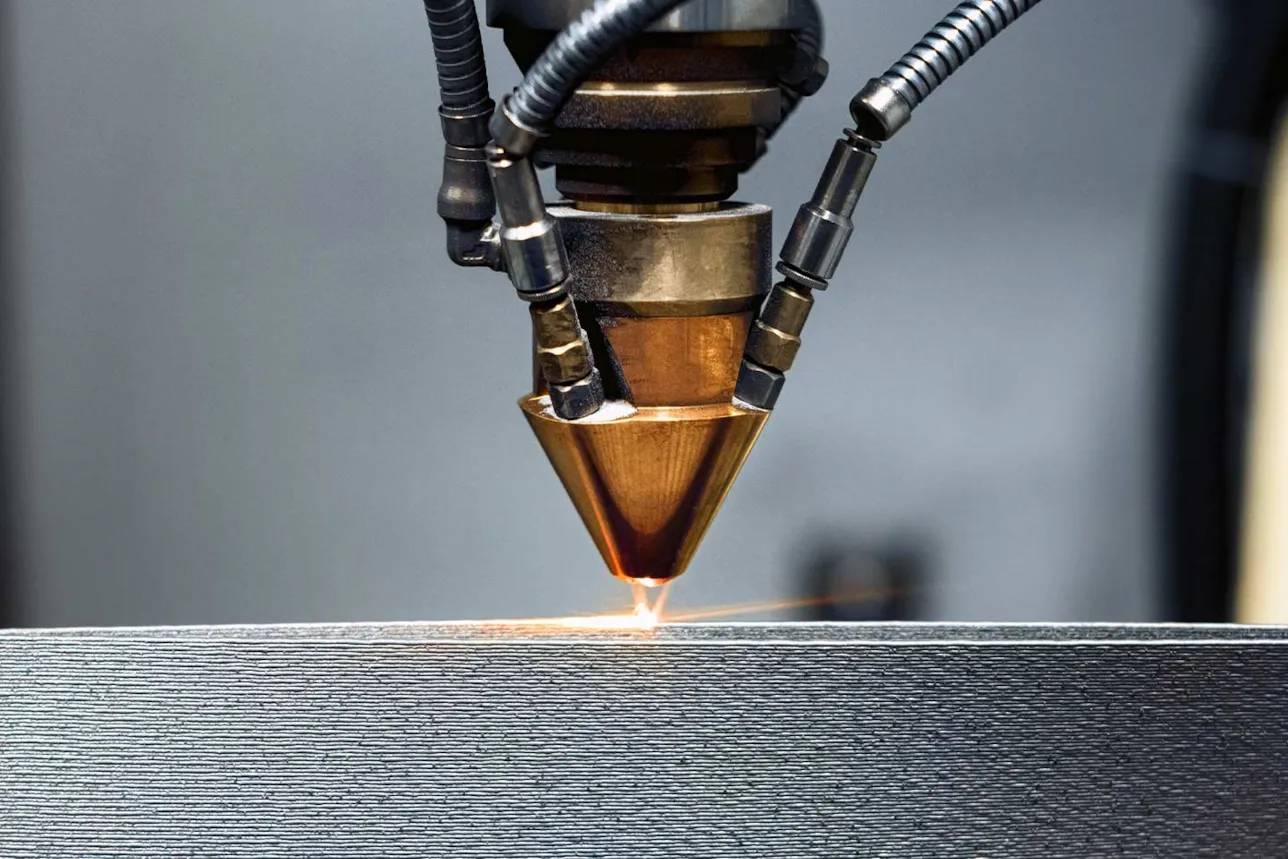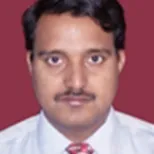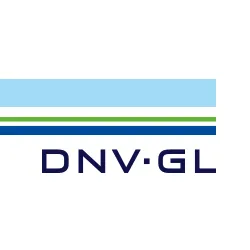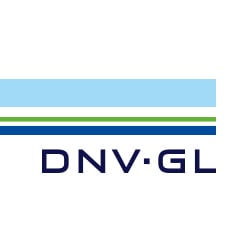

Building trust in additive manufacturing
Additive manufacturing (AM) is becoming increasingly relevant in the maritime industry. To foster the development of AM, DNV GL opened the Centre of Excellence (CoE) in Singapore, an incubator and test bed for AM technology. An initial project with Wilhelmsen and Ivaldi Group Inc. is yielding promising results.
Featuring in this interview

Dr Sastry Kandukuri, Principal Specialist, DNV GL - Maritime

Dr Sastry Kandukuri has more than 20 years of diverse experience in the maritime, oil and gas and manufacturing sectors. He now leads the DNV GL Global Additive Manufacturing Technology Centre of Excellence (AM CoE) in Singapore. In his previous position as a global material specialist, he provided expert technical advice to internal and external customers. Dr Sastry Kandukuri has received bachelor’s and master’s degrees in Materials Engineering, a master’s in Computer Science and Management and a PhD in Additive Manufacturing/3D Printing Domain from KU Leuven, Belgium.

Simon Ratcliffe , Business Transformation Manager, DNV GL - Maritime

Simon Ratcliffe is a Business Transformation Manager at DNV GL. Simon has been looking into the potential business impact of additive manufacturing for DNV GL customers for some time and leads DNV GL’s efforts to build new business propositions towards AM ecosystems. Simon is an engineer and experienced business innovation consultant with a background in maritime classification and defence industries.
What are the CoE’s principal objectives?

The government of Singapore identified additive manufacturing (AM) as a transformative technology and announced plans in 2013 to invest S$ 500 million (US$ 359 million) in this space under a Future of Manufacturing scheme to help accelerate and expand the 3D printing industry ecosystem in Singapore towards value creation in the digital economy. Encouraged by these favourable conditions, DNV GL set up the Centre of Excellence (CoE) in Singapore to serve as an incubator and test bed for research and development (R&D) in AM technology for the oil and gas, offshore and maritime sectors. While working together with other AM hubs within DNV GL, the AM CoE in Singapore focuses on building and sharing AM-related knowledge and best practice within the organization. The centre is also a pilot service delivery centre for next-generation digital assurance and advisory services in 3D printing and associated technologies. The competence and knowledge gained through AM R&D and advisory engagement with customers will keep DNV GL abreast of the development of additive manufacturing and enable us to provide far-reaching support to the industry.

What progress has been made since the centre opened in 2018?

A lot of progress has been made since the AM CoE opened in 2018. For example, it acts as a point of contact for AM-related enquiries from customers. Meanwhile, the centre has built a solid customer base with more than 100 different companies belonging to a growing ecosystem of advanced manufacturing technology providers in Singapore, attracted by our vibrant and diversified manufacturing sector. In 2019, DNV GL certified the first 3D printed parts and qualified the first repair procedure for Sembcorp Marine’s use of 3D printing technology for repairing non-critical parts such as worn-out metal sleeves used in pumps, and for fabricating bevel gear sets for machinery applications. During a recently concluded Joint Industry Programme initiated by the Maritime and Port Authority of Singapore (MPA), the Singapore Shipping Association (SSA) and the National Additive Manufacturing Innovation Cluster (NAMIC), DNV GL as a lead researcher conducted a market feasibility study on additive manufacturing. During the study a database of nearly 600,000 marine parts orders has been consolidated, based on the information shared by JIP partners, which has been put together through a series of data collection surveys, workshops and interviews. Local market conditions and partner concerns were also factored in when 100 common marine spare parts were shortlisted to be applicable for 3D printing, based on various commercial drivers such as value proposition, frequency of demand, inventory portfolio and lead time. These parts represent strong business potential for novel technologies. DNV GL is also working with Aurora Labs to develop an AM certification standard that will cover the full value chain from powders to parts, as well as certification of technical performance and independent endorsement of Aurora Labs’ processes and products.

What kind of projects does the CoE run?

DNV GL is working with key stakeholders to deliver consulting, advisory, qualification, certification, training and testing services, facilitating the safe introduction of additive manufacturing into the oil and gas, maritime and other allied industries. Furthermore, we are sponsoring two PhD projects in collaboration with the Singapore Centre for 3D printing (SC3DP) at the renowned Nanyang Technological University (NTU). We also launched a certification scheme for 3D-printed parts and issued the first AM certificate to Sembcorp Marine. By closely working with national and international AM standards committees, DNV GL strives to create more guidelines and standards for additive manufacturing. Many more similar projects are in progress, which will help to gather and exchange valuable knowledge and operationalize AM in the oil and gas, offshore and marine sectors. We are in the fortunate situation of having a team that is dedicated almost exclusively to the AM CoE. It consists of multidiscipline experts across DNV GL’s business areas who are developing a business model for the AM industry.

AM/3D printing is often mentioned as one of the emerging technologies at the heart of “Marine 4.0” but do you think it’s fully understood?

Although we’ve seen massive interest in AM in the last few years, the majority of companies are at the very beginning of their digital transformation journey. In light of the many advantages of additive manufacturing this will change over time. But a lot needs to be done to increase the understanding and awareness of benefits resulting from supply chain digitalization and other digital technologies, including additive manufacturing. We also need to openly address the limitations of AM. It would be wrong to say it is the magic bullet for all marine manufacturing and spare parts challenges.

At this time, how extensively is AM being used in the industry, e.g. for printing spare parts? And how much is this likely to change over the next five to ten years?

We observe that key stakeholders in the maritime and oil and gas value chains are using AM technology for part replacements in low to medium critical application areas to save time or cost, to simplify design, to manage obsolescence and to improve the tooling fabrication process. In the long term AM, in combination with digitalization, is poised to revolutionize global supply chains for maritime spare parts through the creation of on-demand manufacturing ecosystems. Simon Ratcliffe: To gain trust in 3D-printed parts, the entire process from the generation of a printing file through to the finished part must be documented and verified seamlessly. As an independent, third-party body, DNV GL has a vital part to play in this trust-building process and is in the process of identifying critical aspects and new risks that must be dealt with. In this world of digital inventory there are three emerging needs: The first is traceability – what is in the inventory, who created it, how and when did it get there, et cetera. The second is fitness for purpose: What is it, what can I use it for, does it have any qualifications, does it have any approvals? Those two aspects are very important to users. The third point, which is of greater interest to OEMs, is whether there is any intellectual property, or IP, involved and who is its owner. Can every use of the IP be recorded? These are new needs. We must develop new services to address them.

Can you give an example of how such a new ecosystem could be established?

To tackle the challenge of revolutionizing global maritime supply chains, DNV GL teamed up with Wilhelmsen and Ivaldi Group Inc. in a pilot project to assure their growing parts-as-a-service ecosystem. In the pilot, Wilhelmsen, as part of their ongoing cooperation with Ivaldi Group, will provide spare parts on demand to six selected customers’ vessels around the globe. Through a unique digitization and certification process, parts will be produced on-demand, without having to go through time consuming and costly storage, shipping, customs and receiving processes. Already in the next five to ten years, it is expected that more than 50,000 unique spare parts could be digitalized. Together, the maritime, offshore and oil and gas industries will probably account for around 5 per cent of the total 3D printing market.

How exactly does the digitalization and certification process work for that project?

Wilhelmsen and Ivaldi apply their additive manufacturing knowledge and procurement data models to the pilot customer’s spare parts inventory to identify candidate parts to 3D print on demand. The selected parts, where the business case makes sense, are then digitalized by Ivaldi engineers and 3D-printed versions developed for inclusion in the Wilhelmsen digital inventory. During the digitalization procedure, key information pertaining to traceability and fitness for purpose for each part is recorded with DNV GL in the Print Passport Service. When a spare part order is received by Wilhelmsen, it is produced locally at one of Wilhelmsen’s micro-factories with only the last mile delivery to the customer to complete. Key information about each printed part is also tracked in the Print Passport Service and linked to the declaration of conformity provided by Wilhelmsen.

Can other shipowners also apply for the current assurance pilot project? Are similar projects planned?

The current early adopter programme is currently full, but Wilhelmsen is planning the next customer programme and is open for dialogue with other shipowners and managers who are interested in joining. Ivaldi, Wilhelmsen and DNV GL are also in conversation with several OEMs about the possibility of offering original spares through the on-demand network, vastly expanding on the value of the spare parts available in the digital inventory.
